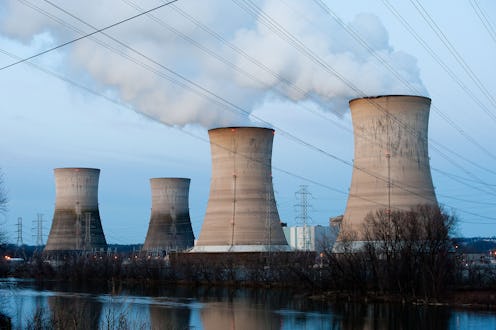News
You Won't Believe This Vacation Idea
The second-worst nuclear incident the world's ever seen, the leak of Japan's Fukushima power plant on Mar. 11, 2011, wouldn't strike many people as an obvious investment opportunity. Apparently, that is, unless you're a team of tourism developers: in what might be a pretty clear case of "too soon", one team has submitted a plan for making the radiation zone into a holiday destination modeled on Chernobyl's nuclear ghost towns. Never mind that the 2011 triple disaster of earthquake-tsunami-reactor meltdown displaced some 300,000 people, and that several hundred thousand tons of radiated water continue to leak into the Pacific Ocean every day, making Fukushima an environmental disaster in progress.
Riding on a wave of continued fascination in "abandonment porn" and "dark tourism," author-critic Hiroki Azuma and his 8-member team want to turn the nuclear wasteland into revenue. The proposal outlines a village serving as a gateway to the "site zero" (the founders draw parallels to the successes of New York's Ground Zero) with a hotel at the border of the evacuation area especially constructed to protect its visitors from possibly heightened levels of radiation. (Oh, good!) The major highlight would be for visitors to dress up in the characteristic white jumpsuits and respirators to witness the destruction at the Dai-Ichi reactors for themselves.
Somehow, "Inspired by Chernobyl" just doesn't ever seem to sound right. And the pioneers themselves seem to know that their selling pitch is kind of sketchy:
Some readers may feel shocked. Tourism at a nuclear accident site!? Some may even feel a sense of disgust. The word "tourism" carries with it an impression of frivolity. It's no surprise to come across such a reaction in Japan, a country where little time has passed since a nuclear accident.
Demand doesn't seem to be a problem; Fukushima's abandoned towns and fishing villages have drawn busloads of domestic and international tourists since just months after the disaster. Parallels are also drawn to Cambodia's "killing fields" — a fixed item on the itinerary of every gap-year backpacker traveling through.
"I do not foresee any particularly large obstacles to the project and visitors will be protected from radiation from the plant because they will only be allowed to visit areas that have been deemed safe," Azuma has said, adding that the fascination in dark tourism is only natural as "man is a being of curiosity."
Only 10 percent of the Fukushima prefecture is currently in the radiation zone, and the tentatively named Fukushima Gate Village. (Add that to an already impressive list of local attractions including a ski resort; cherry blossom sightings; and a Hawaiian themed water park complete with Hula girls). In fairness, Azuma's plans also involve providing employment opportunities for those displaced as well as featured research on renewable energy resources.
As the only country that has ever actually had a nuclear bomb dropped on it, Japan already had a complicated relationship to nuclear destruction before Fukushima's disaster. Luckily, it also boasts an impressive record of turning disaster into informative and not-too-macabre tourism sights. Though also controversial at the time, the impact site from the American 1945 A-bomb in Hiroshima was covered by a dome and has been declared a UNESCO World Heritage site. The Nagasaki site, where the second bomb fell, was turned into an Atomic Bomb Museum.
Good news (ish): the developers do have plenty of time to come up with something tasteful. The opening of the resort is not scheduled until the Fukushima disaster's 25th Jubilee anniversary in 2036 ... when we hope sanitation efforts will be well on their way.
Meanwhile, Chernobyl, history's biggest nuclear disaster (which has been doing guided tours for a few years now) may be retiring as a holiday spot. A flagship dark tourism attraction which might actually have seen a spike in interest after Fukushima, Chernobyl's own tours may now be finished by 2015, when a giant shelter cap will be placed on the faulty reactor to prevent the spread of radioactive material.
Which sounds like a good call.
